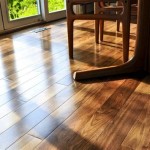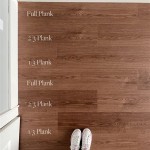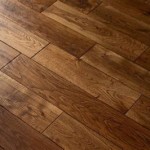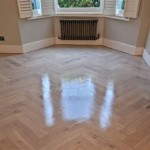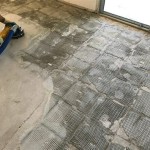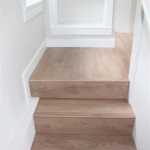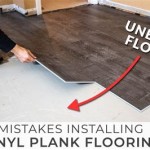Can You Level a Floor With Plywood? A Comprehensive Guide
Uneven floors can present a multitude of problems, ranging from aesthetic imperfections to potential safety hazards. Addressing these issues is crucial for maintaining a comfortable and structurally sound living or working space. One commonly employed method for addressing minor floor imperfections involves utilizing plywood as a leveling material. This article will explore the viability of using plywood for floor leveling, outlining the circumstances in which it is appropriate, the necessary steps for successful implementation, and potential alternative solutions.
The decision to level a floor with plywood hinges largely on the severity of the unevenness. Minor dips and slopes, typically those less than 1/4 inch over a reasonable span (e.g., 4-6 feet), are often suitable for correction with plywood shims or a thin layer of plywood underlayment. However, significant depressions or structural issues require more robust solutions, potentially involving self-leveling compounds, structural repairs, or even complete floor replacement. Attempting to correct substantial floor deficiencies solely with plywood will likely result in an unstable and ultimately unsatisfactory outcome.
Assessing the Floor and Determining the Need for Leveling
Before embarking on any leveling project, a thorough assessment of the existing floor is paramount. This involves identifying the extent and nature of the unevenness. A long level (at least 4 feet) and a straight edge are indispensable tools for this task. Place the level on various points of the floor, both lengthwise and widthwise, to identify high and low spots. A straight edge can then be used to measure the depth of any depressions. Record the measurements meticulously, creating a map of the floor's unevenness. This map will serve as a guide for the subsequent leveling process.
Beyond simply identifying the dips and rises, it's essential to investigate the underlying cause of the floor's unevenness. Is it due to settling of the foundation, water damage, degraded subflooring, or simply poor initial construction? Addressing the root cause is crucial for ensuring the long-term stability of the leveled floor. Ignoring underlying structural problems and merely covering them up with plywood will only lead to recurring issues and potentially more extensive repairs down the line.
Furthermore, consider the existing flooring material and the planned finish flooring. Certain flooring types are more forgiving of slight imperfections than others. For example, carpet can often conceal minor unevenness, while tile or hardwood flooring requires a much flatter and more stable subfloor. The thicker the finish flooring, the more likely it is to bridge minor imperfections. The thickness of the new flooring and its tolerance for imperfections should be considered before deciding on a leveling method.
The Plywood Leveling Process: Step-by-Step
Once a thorough assessment confirms that plywood is an appropriate leveling solution, the following steps outline the process: First, gather the necessary materials and tools. This includes plywood sheets (typically 1/4 inch or 1/2 inch thickness, depending on the depth of the depressions), a circular saw or jigsaw, a level, a straight edge, a measuring tape, construction adhesive, screws or nails suitable for subfloor attachment, safety glasses, and a dust mask. Choose plywood that is rated for subflooring applications, ensuring it is durable and resistant to moisture.
Next, prepare the existing subfloor. This involves cleaning the surface thoroughly, removing any debris, dirt, or loose nails or screws. Any protruding fasteners should be hammered flush with the subfloor. If there are any signs of mold or mildew, these should be treated with an appropriate cleaning solution before proceeding. A clean and sound subfloor is essential for ensuring proper adhesion of the plywood leveling material.
Then, cut the plywood to the appropriate size and shape. Using the floor map created during the assessment phase, cut the plywood sheets to fit the specific areas that need to be leveled. In some cases, it may be necessary to create shims or tapered pieces of plywood to gradually level out the floor. Accuracy in cutting is crucial for achieving a smooth and even surface. A circular saw is typically used for making straight cuts, while a jigsaw can be used for more intricate shapes.
Apply construction adhesive to the back of the plywood pieces. A generous but even layer of construction adhesive will help to bond the plywood to the subfloor, preventing movement and squeaks. Apply the adhesive in a serpentine pattern to ensure full coverage. Position the plywood pieces over the low spots on the floor, carefully aligning them with the markings on the floor map. Secure the plywood to the subfloor using screws or nails. The type of fastener and its length will depend on the thickness of the plywood and the composition of the subfloor. Space the fasteners evenly, typically every 6-8 inches, to provide adequate holding power. Drive the fasteners flush with the surface of the plywood to avoid creating new imperfections.
Finally, check the levelness of the repaired area. After securing all the plywood pieces, use a level and straight edge to verify that the floor is now level. Make any necessary adjustments, such as adding additional shims or sanding down high spots, to achieve a smooth and even surface. Once the floor is level, sand down any rough edges or seams to create a seamless transition between the plywood and the existing subfloor. This will help to prevent the finish flooring from cracking or becoming uneven over time. A thorough sanding will also ensure a smooth surface for the application of the finish flooring.
Alternative Leveling Solutions
While plywood can be a viable option for leveling minor floor imperfections, several alternative solutions may be more appropriate in certain situations. One such alternative is the use of self-leveling concrete. This is a cement-based mixture that flows easily and self-levels to create a perfectly flat surface. Self-leveling concrete is particularly well-suited for leveling large areas or for correcting more significant floor deficiencies. However, it requires careful preparation and application, and it can be more expensive than using plywood.
Another option is to apply a leveling compound. These compounds are typically gypsum-based and are designed to fill in minor imperfections and create a smooth surface. Leveling compounds are relatively easy to apply and can be used to feather out high spots or fill in small depressions. However, they are not suitable for correcting significant floor unevenness, as they may crack or crumble under pressure. Leveling compounds are best used for fine-tuning the surface before installing a finish flooring.
For more severe floor problems, structural solutions may be necessary. This could involve reinforcing the floor joists, repairing damaged subflooring, or even raising the entire floor. Structural repairs are typically more complex and expensive than simply leveling the floor with plywood or self-leveling concrete, but they are essential for ensuring the long-term stability and safety of the building. Consulting with a qualified structural engineer is recommended before undertaking any significant structural repairs.
In summary, leveling a floor with plywood can be a cost-effective and relatively straightforward solution for addressing minor floor imperfections. However, it's crucial to conduct a thorough assessment of the floor's condition, identify the underlying cause of the unevenness, and choose the appropriate leveling method. When using plywood, careful preparation, accurate cutting, and secure fastening are essential for achieving a satisfactory result. In cases of more significant floor deficiencies or structural problems, alternative solutions such as self-leveling concrete, leveling compounds, or structural repairs may be more appropriate.

How To Level A Plywood Or Osb Subfloor Using Asphalt Shingles Construction Felt

How To Level A Plywood Subfloor With And Self Leveling Compound

Plywood Subfloor Leveling With Sheets How To Raised The Level Of Floor

Plywood Subfloor Leveling With Big Hump Mryoucandoityourself

How To Plywood Floor Leveling For Laminate Flooring Nail Down Installation Diy Mryoucandoityourself

How To Prep Wood Subfloor For Luxury Vinyl Plank Flooring Beginners Fix High And Low Spots
5 Wooden Subflooring Installation Mistakes You Must Avoid Kaltimber Timber Merchant Flooring

Levelling A Problem Floor Canadian Woodworking

How To Level A Plywood Or Osb Subfloor Using Asphalt Shingles Construction Felt

Condo Blues Ten Things You Need To Know Level And Repair An Uneven Floor
See Also
